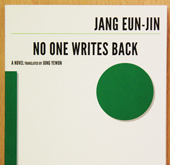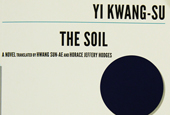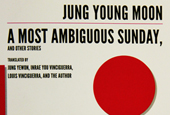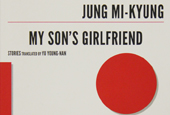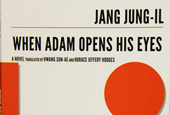One of Korean literature’s most impactful plays has been readable by global audiences in English ever since 2005. It is “The Clowns,” penned in 2000 by playwright and theater director Kim Tae-woong.
The story was published by Hollym, a US-based publisher. The translator was Will Kern, now a professor of English literature at Sungshin Women’s University, who happened to be a playwright himself back in the U.S.
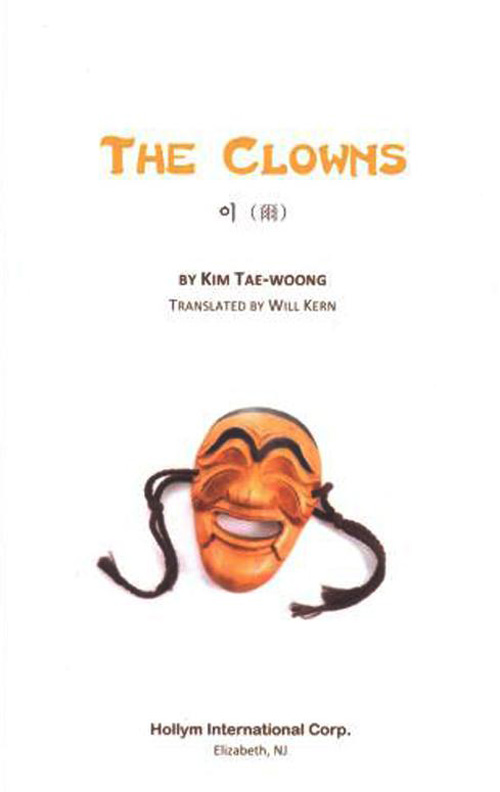
The story revolves around King Yeonsangun (1476-1506), the 10th king of the Joseon Dynasty (1392-1910), and his court clown, Gong-gil.
Gong-gil was a famous, beloved street clown during the Joseon era. He and his fellow stage folk performed plays, some that satirized members of the royal court, including King Yeonsangun and his concubine, Jang Noksu. The troupe was arrested for treason and they were forced to perform in front of the royal court and, of course, the king who they were mocking.
If the play were not good enough or funny enough to make the king laugh, Gong-gil and his fellow entertainers would have to pay the ultimate price: death. Gong-gil performed dressed as a girl and the king instantly fell for the effeminate character.
One night, the king called Gong-gil to his private chambers and asked him to perform finger puppet shows. You see, the king had been left alone since he lost his mother at a young age and had lived a wild, promiscuous life. Gong-gil took pity on the king, put on a good show, and became one of the ruler’s only sources of laughter and solace.
The king made the clown part of his court and always brought him to his private chambers to perform. As the king lavished attention on him, Gong-gil slowly developed a strong desire for power, growing oblivious to what he used to be. At the same time, he sympathized with the tyrannical, mad, but lonesome, monarch. The sympathy grows into a strong sense of affection.
Jang Noksu, one of the king’s concubines, becomes jealous and outraged by the relationship between the king and his clown. She tries to have Gong-gil killed. The entertainer comes to a tragic end in the arms of his source of power, and his lover, the king.
Holding the dying Gong-gil, the king says in tears:
“Why is life so painful? I have no one to turn to any more. Please take me to that darkness, too. I am the evil one who has dissipated all the riches of the country. Please take me. The flame was nothing but a weak one, facing a fierce wind. The flame just disappeared, like smoke in the air. It’s already gone.”
This queer-themed drama has been well-received for its sophisticated and witty manner as it allows readers to explore what the era might have looked like. It includes a wide range of psychological states inside each of the characters, showing them to be human beings, experiencing loneliness and lust for power all the way through to love and betrayal.
The Korean title, “Yi,” is from the Chinese character, “爾.” It was used as an honorific title when the king called his courtiers. The “Yi” in the play’s title is how the king called Gong-gil. For example, as the tyrant, in despair, moans when Gong-gil is dying, he calls out, “Yi, Yi, Gong-gil, what is there behind the darkness? Why are you going in that direction?”
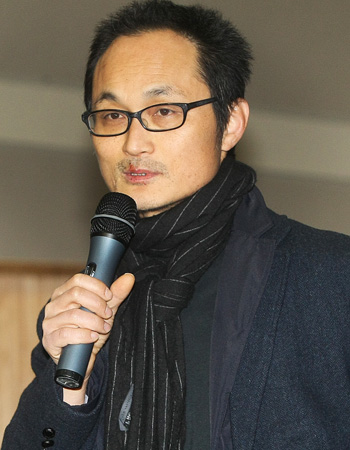 In an interview with the author, when asked how he came up with the whole theme, Kim answered that, “I’ve always been interested in traditional performances back in the Joseon period. Traditional Western performances are usually centered on the drama itself, while ancient Koreans focused solely on ‘the joy of plays.’ ”
In an interview with the author, when asked how he came up with the whole theme, Kim answered that, “I’ve always been interested in traditional performances back in the Joseon period. Traditional Western performances are usually centered on the drama itself, while ancient Koreans focused solely on ‘the joy of plays.’ ”
He obsessively tried to find intrinsic elements of “laughter” in such plays, the writer said. “When I wrote this one, I put most of my focus on disclosing the difference between the powers of the king and of the clown, and what kind of laughs the play can produce and how it will end.”
Upon its release in 2000, the work was staged in the theater. In 2005, a movie based on the story, “King and the Clown,” was premiered, becoming one of Korea’s highest-grossing films that year with more than 10 million tickets sold.
Kim Tae-woong graduated from Seoul National University with a degree in philosophy and went on to obtain a master’s degree in fine arts at Korea National University of Arts (KNUA). Kim made his literary debut with his first play “The Circus of Flies” in 1997.
His works include other plays: “Moonlight Play” (1999); “The Door” (2000); “The Symphony of Balloons” (2001); “A Man Holding Flowers” (2002); “Enjoyable Life” (2004); “Self-reflection“ (2007); and, “Ring, Ring, Ring, Ring” (2009).
The writer also serves as a professor at the School of Drama of his alma mater, KNUA.
By Sohn JiAe
Korea.net Staff Writer
jiae5853@korea.kr
The story was published by Hollym, a US-based publisher. The translator was Will Kern, now a professor of English literature at Sungshin Women’s University, who happened to be a playwright himself back in the U.S.

Playwright and stage director Kim Tae-woong’s “The Clowns” was translated into English in 2005. (photo courtesy of the Daesan Foundation )
The story revolves around King Yeonsangun (1476-1506), the 10th king of the Joseon Dynasty (1392-1910), and his court clown, Gong-gil.
Gong-gil was a famous, beloved street clown during the Joseon era. He and his fellow stage folk performed plays, some that satirized members of the royal court, including King Yeonsangun and his concubine, Jang Noksu. The troupe was arrested for treason and they were forced to perform in front of the royal court and, of course, the king who they were mocking.
If the play were not good enough or funny enough to make the king laugh, Gong-gil and his fellow entertainers would have to pay the ultimate price: death. Gong-gil performed dressed as a girl and the king instantly fell for the effeminate character.
One night, the king called Gong-gil to his private chambers and asked him to perform finger puppet shows. You see, the king had been left alone since he lost his mother at a young age and had lived a wild, promiscuous life. Gong-gil took pity on the king, put on a good show, and became one of the ruler’s only sources of laughter and solace.
The king made the clown part of his court and always brought him to his private chambers to perform. As the king lavished attention on him, Gong-gil slowly developed a strong desire for power, growing oblivious to what he used to be. At the same time, he sympathized with the tyrannical, mad, but lonesome, monarch. The sympathy grows into a strong sense of affection.
Jang Noksu, one of the king’s concubines, becomes jealous and outraged by the relationship between the king and his clown. She tries to have Gong-gil killed. The entertainer comes to a tragic end in the arms of his source of power, and his lover, the king.
Holding the dying Gong-gil, the king says in tears:
“Why is life so painful? I have no one to turn to any more. Please take me to that darkness, too. I am the evil one who has dissipated all the riches of the country. Please take me. The flame was nothing but a weak one, facing a fierce wind. The flame just disappeared, like smoke in the air. It’s already gone.”
This queer-themed drama has been well-received for its sophisticated and witty manner as it allows readers to explore what the era might have looked like. It includes a wide range of psychological states inside each of the characters, showing them to be human beings, experiencing loneliness and lust for power all the way through to love and betrayal.
The Korean title, “Yi,” is from the Chinese character, “爾.” It was used as an honorific title when the king called his courtiers. The “Yi” in the play’s title is how the king called Gong-gil. For example, as the tyrant, in despair, moans when Gong-gil is dying, he calls out, “Yi, Yi, Gong-gil, what is there behind the darkness? Why are you going in that direction?”

Playwright and theater director Kim Tae-woong. (photo: Yonhap News)
He obsessively tried to find intrinsic elements of “laughter” in such plays, the writer said. “When I wrote this one, I put most of my focus on disclosing the difference between the powers of the king and of the clown, and what kind of laughs the play can produce and how it will end.”
Upon its release in 2000, the work was staged in the theater. In 2005, a movie based on the story, “King and the Clown,” was premiered, becoming one of Korea’s highest-grossing films that year with more than 10 million tickets sold.
Kim Tae-woong graduated from Seoul National University with a degree in philosophy and went on to obtain a master’s degree in fine arts at Korea National University of Arts (KNUA). Kim made his literary debut with his first play “The Circus of Flies” in 1997.
His works include other plays: “Moonlight Play” (1999); “The Door” (2000); “The Symphony of Balloons” (2001); “A Man Holding Flowers” (2002); “Enjoyable Life” (2004); “Self-reflection“ (2007); and, “Ring, Ring, Ring, Ring” (2009).
The writer also serves as a professor at the School of Drama of his alma mater, KNUA.
By Sohn JiAe
Korea.net Staff Writer
jiae5853@korea.kr
